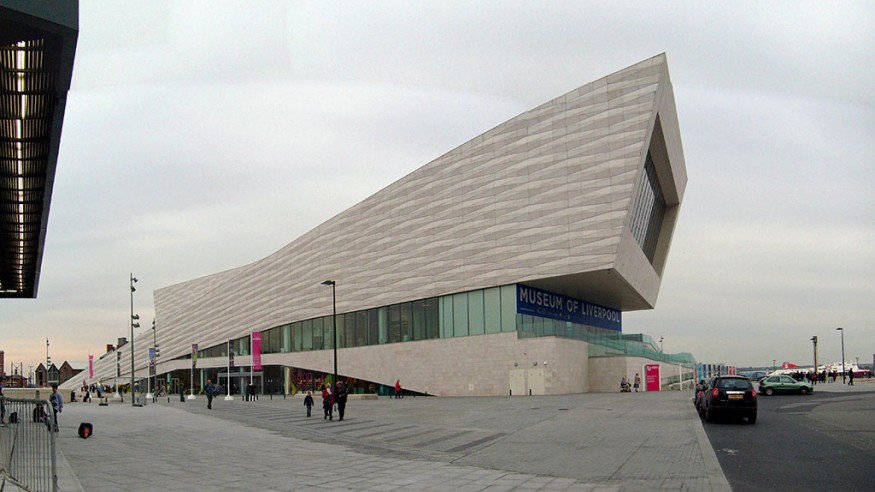
Museums as Storytellers
The Museum of Liverpool. (Photo by John Bradley)
What started for Matt Hill ’13 as a 2012 OWU Travel-Learning course on “British Images,” grew into his Theory-to-Practice grant called “Reading the Museum: Institutional Determinants of Cultural Identity in Liverpool,” and research at the Museum of Liverpool over spring break.
“In that course, we looked at museum spaces as areas of representation,” explains the English major, who decided he wanted to do more research and investigate “how museums enshrine, through a discernible narrative structure, certain ideas we have about what constitutes identity.” What he has realized, is that museums tell stories in much the same way as books or poems do. “But instead of using words, museums use what might be called poetics of space,” says Hill. He goes on to explain that everything from how objects are arranged in a museum, to the presence of interactive elements and wording on the labels contribute to generating a sense of what the space in front of you makes you feel and think. “The emphasis in museums nowadays isn’t really on the objects…it’s on you.” What Hill observed while in Liverpool, was that the city has a strong sense of its history as a global city of connections. “It also wants to emphasize the unique culture that formed as a result,” he says, explaining that every element in the museum’s system—the individual museums, exhibits, sections within exhibits, and individual display cases work together to drive home this narrative.
“It was easy to see the ways in which Liverpool thinks of itself and the techniques used to drive that message home,” says Hill. Although he still is putting together his research findings, Hill appreciates the opportunity he has had to conduct independent research—something he wanted to do before going to graduate school.
“This grant enabled me to extend what I had learned in the classroom and test the definitions, boundaries, and applications of my discipline.”
